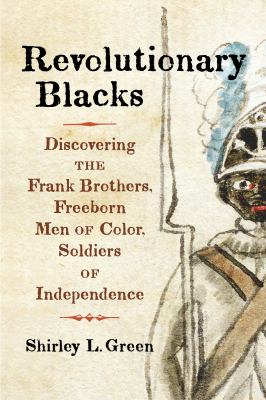
Book
|
Revolutionary Blacks : discovering the Frank Brothers, freeborn men of color, soldiers of independence
Copies
1 Total copies, 1 Copies are in,
0 Copies are out.
Title
Revolutionary Blacks : discovering the Frank Brothers, freeborn men of color, soldiers of independence
Call No
E185.63 .R48 2023
Authors
Subjects
Frank, William.
Frank, Benjamin.
United States. Continental Army. Rhode Island Regiment, 2nd.
United States. Continental Army. Rhode Island Regiment, 2nd. fast (OCoLC)fst00687652
Enslaved soldiers--United States--18th century.
Antislavery movements--United States--History--18th century.
African American loyalists.
African American loyalists.
African Americans.
Antislavery movements.
Enslaved soldiers.
Military participation--African American.
United States--History--Revolution, 1775-1783--African Americans.
United States--History--Revolution, 1775-1783--Participation, African American.
Rhode Island--History--Revolution, 1775-1783--Participation, African American.
Rhode Island.
United States.
History.
Frank, Benjamin.
United States. Continental Army. Rhode Island Regiment, 2nd.
United States. Continental Army. Rhode Island Regiment, 2nd. fast (OCoLC)fst00687652
Enslaved soldiers--United States--18th century.
Antislavery movements--United States--History--18th century.
African American loyalists.
African American loyalists.
African Americans.
Antislavery movements.
Enslaved soldiers.
Military participation--African American.
United States--History--Revolution, 1775-1783--African Americans.
United States--History--Revolution, 1775-1783--Participation, African American.
Rhode Island--History--Revolution, 1775-1783--Participation, African American.
Rhode Island.
United States.
History.
Language
English
Published
Yardley, Pennsylvania : Westholme Publishing [2023]
Publication Desc
xx, 331 pages : illustrations, maps, portraits ;
ISBN
9781594164064 (hardcover)
Dimensions
24 cm
MLA
APA
Chicago
0
/
0








